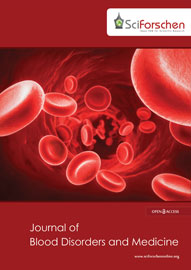
Senior Scientist II
Department of Biotechnology
ADIMAB LLC,
Lebanon
Education
| 1998-2002 | Post-doctoral Research Associate, University of Maryland Biotechnology Institute. |
| 1996 – 1998 | Post-doctoral Fellow, The Lawson Health Research Institute,University of Western Ontario, London, Canada |
Biography
Dr. Sampath Kumar is presently a Senior Scientist II at Adimab LLC, where he leads a group building technology platform for Cell line development, protein expression and cell culture. He earned a Ph.D. in biology (developmental endocrinology) from the National University of Singapore. He thenconducted post-doctoral research first at The Lawson Health Research Institute (London, Ontario, Canada) and then at the University of Maryland Biotechnology Institute (Baltimore, Maryland). His research in both labs focused on molecular reproductive endocrinology,
He began his biopharmaceutical/biotechnology career at CuraGen Corporation in 2002. He has since worked for Wyeth, Pfizer and Biogen. He has worked on a variety of proteins that include antibodies and difficult-to-express clotting factors (factors IX, VII, VIII, X and VWF). He employs cell and molecular biological tools to i) understand the post-translational limitations to expression of therapeutic proteins, and ii) to study the effect of culture conditions on productivity and protein product quality in cell culture.
Research Interest
His expertise include generation of manufacturing/clinical-grade stable cell linesand cell culture process development.
Professional Activities:
- Invited by Biotechnology Journal to contribute to a special issue on Mammalian Production systems (see Kumar, 2015 under publications)
- Member, Scientific Advisory Committee, IBC conference on "Recombinant Protein and Complex Biologic Development and Production, March 16-18, 2011, Bellevue, WA. Repeated the role for a similar conference in San Diego, CA Feb. 27-March 2, 2012.
- National Science Foundation Research grant award, co-principal investigator. “Does Thyrotropin (TSH) Play a Direct Role in Gametogenesis?” (JM Trant and Kumar, IBN-0214569, 2002 – 2004, $205K).
- Sister Mary Doyle Research Award for stage presentation – Second Place, Category: Post-doctoralfellows and Medical Fellows, Lawson Health Research Institute, London, ON, Canada, October, 1997.
- National University of Singapore Research Scholarship (1990 – 1994).
- University of Agricultural Sciences Merit Scholarship, Bangalore, India, 1983 – 1985.
Publications
- Kumar, S. (2015) Industrial production of clotting factors: Challenges of expression and choice of host cell lines. Biotechnol. J. 10:995-1004
- Kumar, S., McCarthy, K., Francullo, F., Crowe, K., Heller-Harrison, R., Wang, W., Hiller, G., and Leonard, M (2011). A High Cell Density Approach to Fed-Batch Cell Culture for Production of Biopharmaceuticals. Proceedings of the 21st Annual Meeting of the European Society for Animal Cell Technology (ESACT), Dublin, Ireland, June 7–10, 2009, Springer Science+Business Media B.V., p589-92
- Khan N, Jeffers M, Kumar, S., Hackett C, Boldog F, Khramtsov N, Qian X, Mills E, Berghs SC, Carey N, Finn PW, Collins LS, Tumber A, Ritchie JW, Jensen PB, Lichenstein HS, Sehested M. (2008). Determination of the class and isoform selectivity of small-molecule histone deacetylase inhibitors. Biochem J. 409(2):581-9.
- Zmora N, Kazeto Y, Kumar R.S., Schulz RW, Trant, J.M. (2007). Production of recombinantIctalurus punctatus FSH and LH in S2 Drosophila cell line and an indication of their differential actions. J Endocrinol., 194(2):407-16
- Klemcke, H. G. Kumar, R.S., Yang, K., Vallet, J. L., and Christenson, R. K. (2003). 11-betaHydroxysteroid Dehydrogenase and Glucocorticoid Receptor Messenger RNA Expression in Porcine Placentae: Effects of Stage of Gestation, Breed, and Uterine Environment. Biol Reprod 69(6): 1945- 50
- Kumar, R.S. and Trant, J.M. (2003) Hypophyseal Gene Expression Profiles of FSH-beta, LH-betaand Glycoprotein Hormone-alpha Subunits in Ictalurus punctatus Throughout a Reproductive Cycle. Gen. Comp. Endocrinology 136(1): 82-89
- Kumar, R.S., Ijiri, S. and Trant, J.M. (2001). Molecular Biology of channel catfish gonadotropin receptors: 1.Cloning of a functional luteinizing hormone receptor and pre-ovulatory induction of gene expression. Biol. Reprod, 64: 1010-1018
- Kumar, R.S., Ijiri, S. and Trant, J.M. (2001). Molecular Biology of the channel catfish gonadotropin receptors: 2. cDNA cloning, functional expression, and seasonal gene expression of follicle- stimulating hormone receptor. Biol. Reprod, 65: 710-717
- Kumar, R.S., Ijiri, S., and Trant, J.M. (2000). Cloning and functional expression of a thyrotropin receptor from the gonads of a vertebrate (Morone saxatilis): Potential thyroid-independent role for thyrotropin in reproduction. Mol. Cell. Endocrinol., 167:1-9
- Kumar, R.S. and Trant, J.M. (2001). Piscine glycoprotein hormone (gonadotropin and thyrotropin) receptors: a review of recent developments. Comp Biochem Physiol B Biochem Mol Biol., 129:347-55
- Alok, D., Hassin, S., Kumar, R.S., Trant, J.M., Yu, K. and Zohar, Y. (2000). Characterization of a pituitary GnRH receptor from Morone saxatilis. Mol. Cell. Endocrinol 168: 65-75
- Kumar, R.S., Ijiri, S., and Trant, J.M. (2000). Seasonal changes in the expression of the genes encoding steroidogenic enzymes in the ovary of Ictalurus punctatus. Biol. Reprod. 63 (6): 1676-1682.
- Kumar, R.S. Mathews, S.G. and Yang, Y (1998). 11beta-Hydroxysteroid dehydrogenase 2 is the predominant isozyme in the guinea pig placenta: Decreases in mRNA and activity at term. Biol. Reprod., 59: 1378-1384
- Kumar, R.S. Yu, M., Khalil, M.W., and Yang, Y. (1997). Metyrapone is a competitive inhibitor of11beta-hydroxysteroid dehydrogenase type 1 reductase. J. Steroid Biochem. Mol. Biol., 62: 195-199
- Kumar, R.S., Munro, A.D., and Lam, T.J. (1996). Ontogeny of steroidogenic proteins (adrenodoxin and cytochrome P450-21) in the adrenals of Lates calcarifer. Gen. Comp. Endocrinol. 102: 147-155
- Kumar, R.S. (1994). Expression of adrenodoxin-like protein in teleost species: immunohistochemical evidence J. Exp. Zool., 270: 557-561 (a rapid publication)

